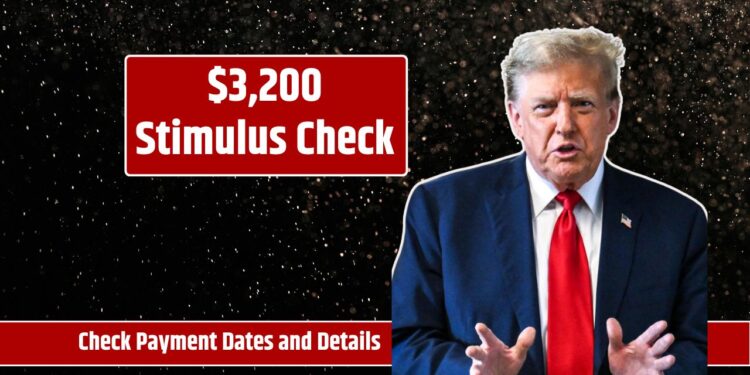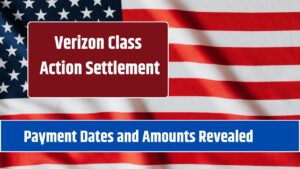With inflation still pushing prices higher and household budgets stretched thin, the $3,200 stimulus payment for April 2025 is generating major interest. Unlike earlier pandemic-era federal stimulus checks, this payment comes from a mix of state programs and federal tax credits, and how much you receive—or if you receive anything at all—depends on where you live and your financial situation.
Here’s a detailed look at how the payment works, who qualifies, and how to claim your share.
What Is the $3,200 Stimulus Payment?
This payment isn’t a single, nationwide check. Instead, it’s made up of various state-level initiatives and federal tax benefits. Some states are offering direct checks, while others provide refundable tax credits or special one-time payments. In some cases, programs like Alaska’s Permanent Fund Dividend (PFD) contribute to the total amount.
Examples of Program Sources:
- Alaska: Eligible residents may receive $3,200 via the 2025 PFD.
- Colorado: Low- to middle-income households can qualify for state tax credits up to $3,200.
- Other States: Offering tax rebates, energy cost relief, or expanded earned income tax credits.
The payment structure and application process vary by state, so checking local guidelines is essential.
Quick Overview
| Feature | Details |
|---|---|
| Payment Amount | Up to $3,200 |
| Eligibility | Depends on state, income, and household size |
| Application | Online or by mail |
| Timing | Payments begin April 2025 |
| Deadlines | State-specific; varies by program |
| Sources | IRS.gov and your state’s tax authority |
Why the Payment Matters
This stimulus initiative is more than temporary relief. It’s designed to:
- Help families afford essentials like food, rent, and transportation
- Reduce financial stress for working individuals and caregivers
- Boost local economies through increased household spending
Real Example:
Maria, a part-time worker and single mom in Colorado, received a $3,200 refundable tax credit in early 2024. She used the money to pay her rent and cover childcare expenses, allowing her to keep working and stay financially stable.
Who Is Eligible?
While specific rules vary by state, most programs consider four main factors:
1. Income Thresholds
| Filing Status | Income Limit |
|---|---|
| Single | Less than $75,000 |
| Married Filing Jointly | Less than $150,000 |
| Head of Household | Around $112,500 (varies by state) |
Most benefits are targeted at low- and moderate-income households. Earnings above these thresholds may reduce or eliminate eligibility.
2. State Residency
- Alaska: Must be a full-year resident for the PFD.
- Other states: You typically need to be a resident and file a state income tax return to qualify for credits or payments.
3. Dependents
Many states offer additional benefits for dependents under 17. Families may receive extra funds per child, increasing the total payment.
4. Tax Filing Status
You must have filed a 2023 or 2024 tax return. If you missed previous filings, you’re likely ineligible until those returns are submitted. Filing electronically often speeds up the payment process.
How to Claim Your $3,200 Payment
Step 1: Check Eligibility
Visit your state tax agency website or IRS.gov to confirm income limits, residency rules, and eligibility requirements.
Step 2: Gather Required Documents
You’ll likely need:
- Social Security Number or ITIN
- Proof of residency (lease, utility bill, etc.)
- Proof of income (W-2, 1099, tax returns)
- Any additional forms required by your state
Step 3: Submit Your Application
- Online: Most states have secure portals for digital submissions.
- By Mail: Paper applications are accepted but take longer. Ensure they’re postmarked before the program deadline.
Step 4: Track Your Payment
- Use the IRS “Where’s My Refund?” tool for federal refunds
- State portals typically allow users to track state-issued credits or checks
Step 5: Follow Up if Needed
If your payment is delayed or if there’s an error, contact your local tax office or the IRS. Acting early can prevent missing deadlines or losing eligibility.
Payment Timeline
| Program Type | Estimated Payout Time |
|---|---|
| Alaska PFD | Early April 2025 |
| State Tax Credits | Mid-April 2025 (post-filing) |
| Federal Refunds | Within 21 days (for e-filed returns) |
| Mailed Tax Returns | Up to 6 weeks |
Application Deadlines
Missing a deadline could mean losing out on the full $3,200. Here’s what to keep in mind:
- Federal Tax Filing Deadline: April 15, 2025 (unless extended)
- State Tax Deadlines: Vary by location
- Application Cutoffs: Refer to each state’s tax department for program-specific dates
Final Thoughts
The $3,200 stimulus payment for April 2025 offers a significant financial boost—if you qualify and take the right steps. Because this relief isn’t automatic for everyone, it’s important to check your eligibility, gather your paperwork, and apply through the proper channels.
Whether it’s through your state’s tax credit program or a dividend like Alaska’s PFD, this payment could help cover crucial expenses or provide a financial buffer in an uncertain economy. Don’t leave money on the table—take action early and stay informed through official government resources.
FAQs:
Is the $3,200 stimulus payment from the federal government?
Not exactly. It’s a combination of state-level programs and federal tax credits, and varies by location and financial situation.
Do I need to apply to receive the payment?
In most cases, yes. Some payments are automatic after you file taxes, while others require a separate application.
When will the money arrive?
Payments will start rolling out in April 2025, with most state-issued credits arriving shortly after tax returns are processed.








